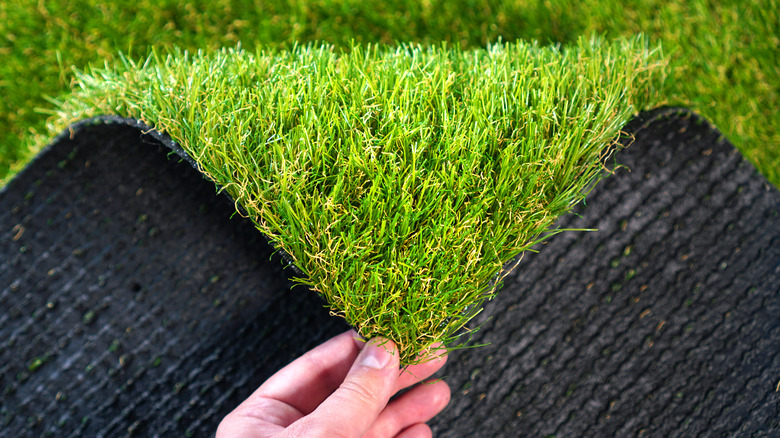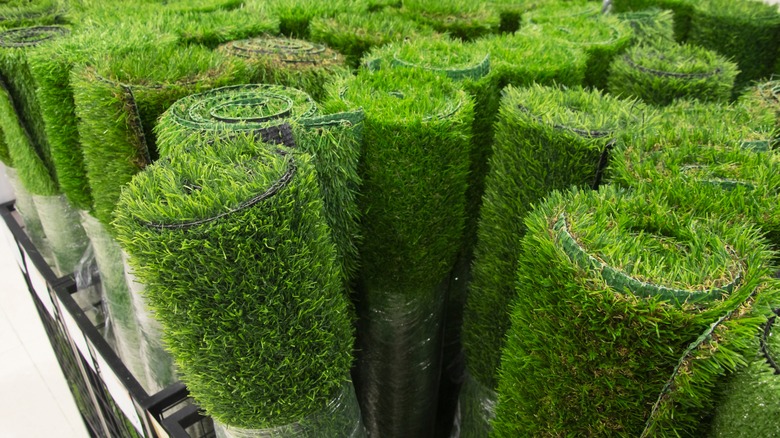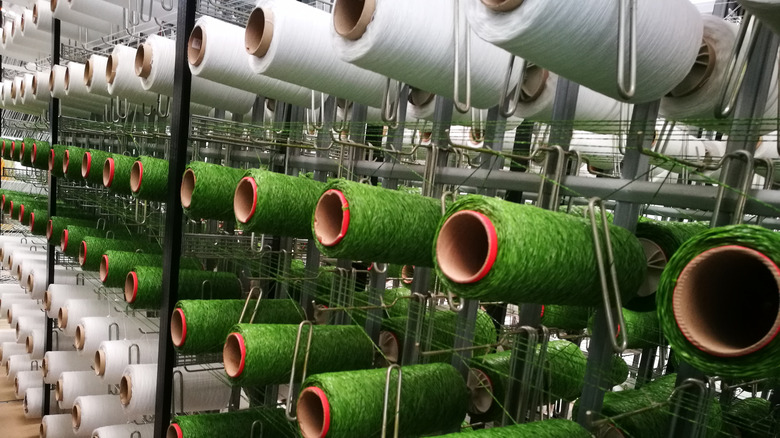What Is Used To Make Artificial Grass?
You may have seen artificial turf on a sports field or in a neighbor's yard in your neighborhood. Or, you may be considering installing your own synthetic turf to cut down on water usage and maintenance requirements, as it's one of the best grass alternatives for your lawn. Artificial turf consists primarily of plastics, including polypropylene, polyethylene, and nylon. Some manufacturers may use urethane to create the backing layer, while others use polypropylene. These plastics are not toxic, making them safe to use around the whole family.
Synthetic grass manufacturers use these materials because they have flexibility that allows them to resemble actual blades of grass. When people walk across them, they fold down and have a slightly cushioned feel that is similar to thick, natural turf. Among the other pros and cons of installing artificial grass, you have a range of installation design options, so you can create the perfect look for your property. Because they do not contain dangerous chemicals, you can use them in any location without harming kids, pets, or natural plants.
Unlike early iterations of artificial turf, which were almost like a rough carpet, newer materials feel softer and are less likely to cause skin abrasions or burns. Although new rolls of artificial grass can cause abrasions when athletes slide across the surface, the frequency is less than with older artificial turf or even natural grass.
The three primary materials used in making artificial grass blades
Individual blades of artificial grass feature three materials most commonly, often mixing all of them in a single roll of turf. Polyethylene plastic is the most common material to find within rolls of artificial grass. It delivers individual blades that most closely resemble the action of real grass in the way they move. It's also extremely soft and comfortable, so it's perfect for a backyard installation where kids and pets may be sitting or playing on the material. Furthermore, it's also more durable than polypropylene.
Still, polypropylene is a common choice, as it's the least expensive material. It is also the least durable of the three materials. However, because of its fine texture, it provides the most realistic appearance to actual grass, so manufacturers will include some polypropylene yarns within the roll to yield a realistic look in the final layout. Nylon blades also appear in rolls of turf in smaller numbers, as they are stiffer than the other plastics, allowing the blades to bounce back to their original height quickly after someone steps on them. Nylon is also the most durable of the plastics, helping to maintain the longevity of the product.
All of these yarns attach to a backing material that holds them in place. Polypropylene cloth and urethane are common options to use as the backing because of their durability and their ability to allow rainwater to drain away from the surface of the roll.
How a manufacturer makes rolls of artificial grass
So with all of these plastic materials in hand, how does a manufacturer put them together to make the roll of faux turf? In short, they mix the individual plastic materials in a hopper, adding dyes that deliver the desired color. The manufacturer also may add a chemical that enhances the ability of the plastic to resist UV rays. The mixing process continues until it becomes thick enough to be turned into a braided rope or a tape and stretched. If making rope, the machine may weave it into yarn. The yarn or tape then ends up on spools before the manufacturer heats it to set it in its current shape.
Once it's set, a tufting machine attaches the yarn or tape to the backing. It uses a needle to force the material in a loop through the backing fabric, ensuring that it stays in place. This machine deploys hundreds of needles across a single row simultaneously, allowing it to cover a large amount of space quickly. Once the entire roll of turf has blades of synthetic turf installed, it's ready for the finalization process. Each roll travels through a machine that spreads a latex material across the backing, which helps to keep the individual blades in place without pulling loose. After going through a sealing process, the latex sets. Finally, a machine measures the yarn height, ensuring uniformity and cutting any blades that are too long.


